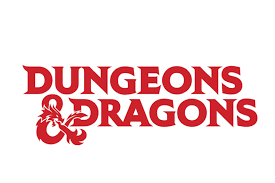Dungeons & Dragons: A New Discovery For A New Generation
March 21, 2022
Dungeons & Dragons, a 1970’s table-top roleplaying game (TTRPG), is going through a massive resurgence among “nerd culture,” coming along with the sort of nerdy resurgence that has occurred in recent years with phenomena such as Marvel, Star Wars, Game of Thrones, and much more. In recent years, with society becoming nerdier and nerdier, much of the stigma that only stinky, sweaty geeks in their basement enjoy these things–as the general perception was back in the 1970’s and 80’s–has vanished. Most everyone has heard the name Dungeons & Dragons before, and that’s a relatively big deal. And, among many players, it is a general belief that Dungeons & Dragons is one of the most fun games on the tabletop scene and beyond.
So first, one might ask what Dungeons & Dragons is to begin with, which is a fair question. Dungeons & Dragons, commonly referred to as D&D, is a game where friends get together, create fantasy characters, and roleplay as those characters in a world constructed in part by a DM, or Dungeon Master, and in part by the player’s imaginations. Player’s are given conflicts and are charged with finding solutions to these conflicts in any way they can imagine.
“D&D is one of my favorite games, mainly because there’s no limit to what you can imagine. Everything someone describes is portrayed differently by everyone playing.” says Ethan Pierce, a junior. But, there are rules: a player can’t simply say, “I kick the Goblin’s head off,” and then have it just happen. The players can still try to do it, but they have to roll a die to see if they succeed; otherwise, it wouldn’t be a game at all if they did everything they wanted to without risk of failure.
But, through the rules and a combination of classes, abilities, and so on, certain characters are going to be better at certain things. A raging Barbarian is going to have a better chance of kicking the aforementioned Goblin’s head off, for example, than a more intellectual Wizard. The Wizard will be better at other things, though, and the player knows that, because he makes a character with an idea in mind. When a character is made, its player can assign certain attributes to be higher or lower, which will give it strengths and weaknesses.
One of the best examples in media is from the TV show Community and its first-ever D&D episode. It’s from Season 2 and called “Advanced Dungeons & Dragons,” and it’s pretty good if wanting to see how the game works. Other examples of D&D-like media would be video games like Skyrim, and other open-world role-playing video games. The difference, however, is that the games market, saying the player has the ability to do whatever he wants, simply isn’t possible. There will always be technical limitations which restrict its players from doing things. But, in D&D, those technical limitations simply don’t exist, because the human imagination is limitless.
One of the more common excuses for not playing D&D is that this demographic isn’t into the idea of it. But, they don’t really know how to start or how to play. Many simply think they aren’t into D&D just based upon the concept alone, but everyone who enjoys the more commonplace nerdy media should at least give the game a try. For the readers of this article who believe they don’t like D&D, what if they actually already do and don’t realize it? Why do so many enjoy things such as Lord of the Rings or Game of Thrones, for example? There are distinct characters interacting with each other and going on adventures. Some of these adventures are large scale; sometimes they are smaller and more grounded. These adventures allow the characters to express themselves and continue interacting with each other. These two examples are exactly how D&D works. If they are appealing, there is no excuse not to try.
D&D is truly for everyone, and there’s so much diversity in who plays it and the characters; it’s remarkable. In a D&D game, using an actual game, for example, there is a thieving monk with a rock collection, a twice-reincarnated charlatan, the heir to a noble family who worships a god of mist, and a plague doctor, just to name a few–and said game is fairly normal. It’s a phenomenal place to become closer with friends, and it will quickly become a breeding ground for inside jokes. But, many will say they don’t have friends, and that’s fine too. There’s game stores in almost every city, including Elkhart, where D&D can be played at set times each week. Two of the great things about playing in a store is that the employees want to sell players things to assist them in their journey and that 99% of D&D players want to create new D&D players. As said by Zach Corpuz, a junior, “D&D has one of the most, if not the most, welcoming community on the tabletop scene.” That’s one of the reasons D&D has grown so much in recent years, but that’s not all of it!
One of the reasons D&D has had a large resurgence is because Wizards of the Coast, the company that makes D&D, made things much easier for new players with the 5th edition of Dungeons & Dragons. The only things one really needs to get started is the most current Player’s Handbook (sometimes called a core rulebook with other games) and some dice–that is a 20-sided die, a 12-sided die, 2-10-sided die, an 8-sided die, a 6-sided die, and a 4-sided die. The cheapest option in total would most likely be the 5th Edition Starter Kit, which can usually be found for less than $20. It comes with all the dice listed above, pre-made characters, a mini-version of the core rule book, and even a small adventure with details on how to play it for beginners! Honestly, this is the most cost effective option out there–one that many players recommend for beginners.
Once a player has all that and wants to make a character with some friends, the group must decide who will be the Dungeon Master, or DM. Each group usually has one person who wishes to do it, and it usually falls to the player who is introducing the group to the game itself. Many individuals really feel put off by the idea of being the DM, which is fair, seeing as it can kind of be intimidating. Some feel they can’t have fun, because they aren’t really playing the game. But, that could not be farther from the truth! In fact, the DM actually plays more than the players. He plays as the heroes and villains the group encounters, as well as creates the plot and challenges the players will face. Because this is a game that works off of the group’s mindset, it can be as simple or as complicated as the group wants. If there’s a rule a group doesn’t like, then they don’t use it! It’s as simple as that.
To find out how it’s done, there are plenty of resources online, from helpful individuals and groups, such as Chris Perkins, Web DM, and Critical Role, to name a few. Additionally, there are many places to see the game being played, such as Critical Role on YouTube or many podcast sites, or Dice, Camera, Action on YouTube, as well, both of which can provide excellent examples of how to play.
D&D is a phenomenal game that can be played by almost anyone, so long as he or she has an ounce of imagination. If more resources are needed, they can be found all over the internet–on Google, YouTube, and more, for those who want to make the world a more fantastical, magical place!



















